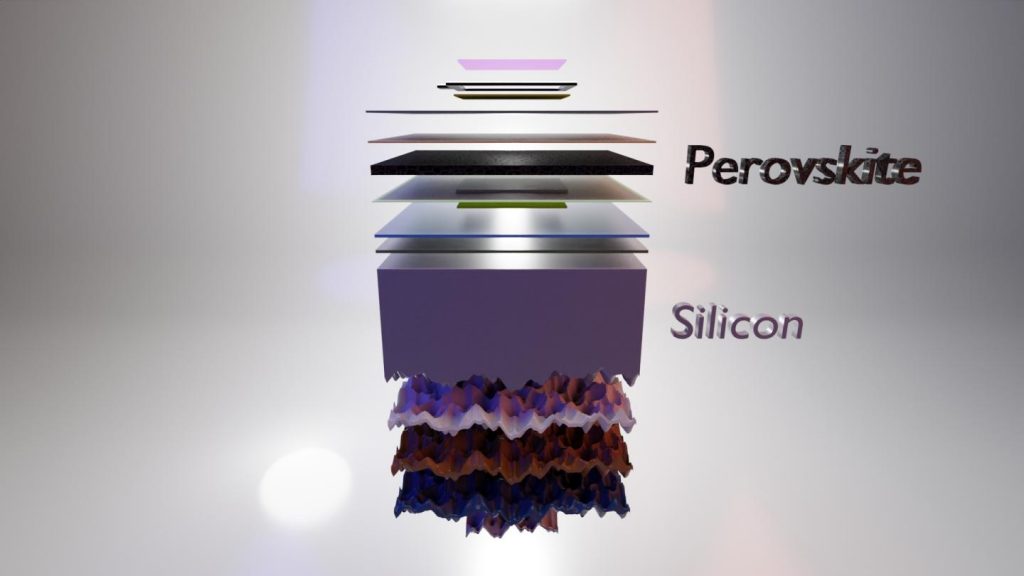French scientists are researching a new generation of perovskite-silicon solar panels to meet our energy needs with maximum efficiency. One of their advantages is the low cost combined with higher efficiency compared to other photovoltaics.
Following a collaboration between the French Institute of Solar Energy and the Italian renewable energy company Enel, a new solar panel has been developed that yields 26.5% and is 9 square centimeters in size, while the open circuit voltage exceeds 1,880 mV.
The scientists finally managed to improve the perovskite-silicon solar panel’s efficiency by 26.5 percent, at least increasing the previous efficiency of 25.8 percent they had achieved at the end of 2022. Their goal is to reach 30% and bring the next generation of panels into production by 2026. Although the difference between them and pellet panels seems small, the improvement achieved by the new materials is significant in the photovoltaic market. This improvement is partly due to the corrections made to the tones of the panel.

In 2009, the first perovskite solar panels were created, with an efficiency of only 3%. Since then, scientists have faced many challenges in improving the material, such as the problem of rapid decomposition into moisture. Plus, thin solar panels made of perovskite and other materials have been significantly improved and provide efficiency of more than 30%. The Helmholtz Center in Berlin holds the record performance of perovskite and silicone cells, with the ability to utilize 32.5% of solar energy for electricity. However, these advanced panels are not yet available on the market.
Research on improving photovoltaic panels never stops and scientists continue to look for new materials that will boost efficiency and reduce construction costs. Recently, the famous businessman Elon Musk caused sense by giving a first taste of the solar panels his company, Tesla, will produce in 2024. These panels are thinner, lighter and more economical than the classic solar panels used today. In fact, advances in photovoltaic panel technology are so great that at Swansea University they were able to print a perovskite solar panel for the first time, expecting further improvements in the future. The market for photovoltaic products is expected to be of great interest in the future.










